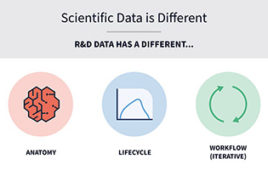Robot Builds Looping Brick Wall in New York Traffic
 |
| Light and shadows bring the digital structures to life. After 12 days of construction, the “Pike Loop” installation is already more than half finished. Courtesy of Gramazio & Kohler / ETH Zurich |
A robot has finished building a looping brick wall right in the middle of New York. Over a period of three weeks, passers-by watched the “Pike Loop” installation in the making on a traffic island. The digitally controlled construction of the sculpture was developed at ETH-Zurich’s Professorship of Architecture and Digital Fabrication.
This brick loop is no ordinary wall. The two architects, Fabio Gramazio and Matthias Kohler, who both teach and research at ETH Zurich, have breathed fresh air into popular design patterns with their interdisciplinary approach: “Digital characteristics can enrich a material and thus influence its architectural expression and functionality”, say the two assistant professors of architecture and digital fabrication, whose research team designed and implemented “Pike Loop.”
Instead of the conventional straight brick wall, you can use shapes and construction principles that have been programmed into the computer and digitally transferred to the material to make a three-dimensional composition. “We marry the digital reality of the computer with the material reality of a building,” say the two architects. They call this approach “digital materiality.”
 |
| The position of the bricks correlates exactly to the model calculated by the computer. Courtesy of Gramazio & Kohler / ETH Zurich |
Over 7,000 bricks were stacked based on complex calculations — not by bricklayers, but by a digitally controlled robot called R-O-B. As R-O-B has a range of 4.5 meters, and the installation is 22 meters long in total, the robot moved along the construction site on a flat-bed trailer to enable it to work continuously on the construction of the wall.
The bricks are bonded together with quick-drying glue — also by the industrial robot. The fact that none of the bricks lies exactly on top of the one below creates a three-dimensional effect. And, as the wall rises from the ground here and there and crosses over itself at several points, the infinite loop gets a dynamic expression
The installation exemplifies how, by combining digital design and fabrication tools, the architects can control the production process in every detail. The resulting buildings, therefore, exhibit shapes and structures that could never be created by hand — at least not without an enormous amount of effort. Consequently, the point of Gramazio and Kohler’s research is not to put the bricklayer out of a job. Their latest installation is primarily for the purposes of architectural research — a test of the potential and limitations of this production technique with respect to a contemporary design culture, as they put it.
Gramazio and Kohler’s research team already used R-O-B to build an oscillating wall at last year’s Architecture Biennale in Venice. The wall, however, was erected in front of the exhibition hall and then transported into the premises. Thus, “Pike Loop” is the first installation of its kind to be constructed on its eventual exhibition site.
The initiator of the installation was the New York gallery Storefront for Art and Architecture, which is holding an exhibition entitled “Digital Materiality” from October 1 to November 14, 2009. The exhibition contains selected projects from Gramazio & Kohler’s teaching and research activities at ETH Zurich’s Department of Architecture. The finished wall was inaugurated on October 27 and will remain on the traffic island until the end of the year.




